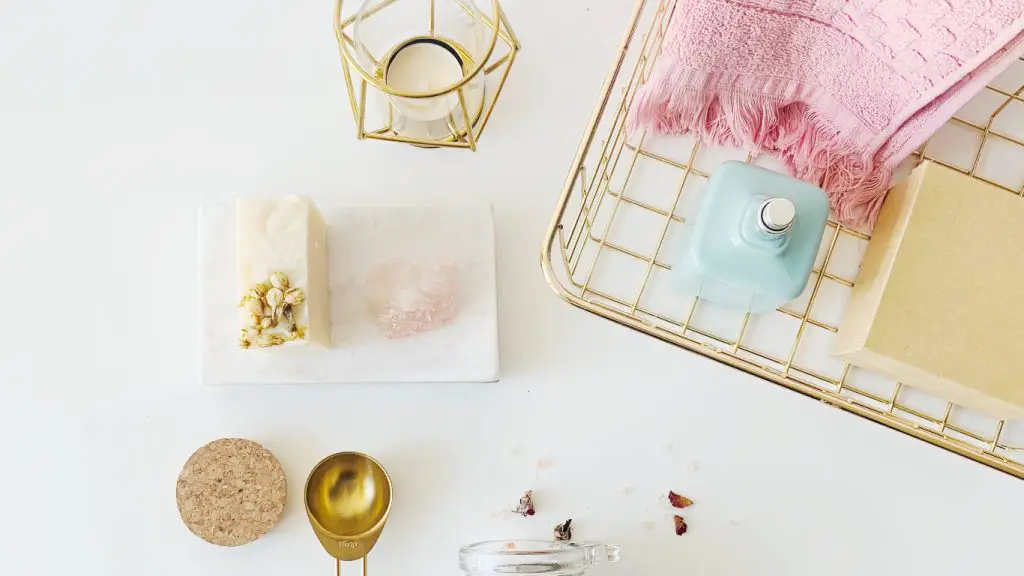Many people talk about adding salt to soap. But what is the use of salt in liquid soap? Does it act as a cleaning agent? Or does it only make your soap harder?
Using salt in liquid soap helps with keeping the pH levels steady; it also acts as a thickening agent. Salt also enhances the cleaning capacities of your soap. Last but not least, it gives your soap a smooth and silky consistency.
Whether you’re seeking a fun hobby, saving money, or pursuing a new business venture, our step-by-step guide makes crafting spa products enjoyable and easy, perfect for hobbies, saving money, or starting a business. Explore 126+ recipes, from soaps to lotions, with our beginner-friendly Quick Start Guide. Ditch store-bought products with unknown chemicals and embrace personalized, high-quality creations that cater to allergies and sensitivities using The Handcrafter’s Companion.
Salt has been used for centuries as a natural way to cleanse and purify the skin. It’s a powerful antiseptic that helps kill bacteria and fungus and helps remove dirt and oils from the skin. But would this be the same case if you add it to liquid soap? Let’s find out.
Benefits of adding salt to liquid soap

Adding salt to your liquid helps with the pH levels of your soap solution. This means it reduces the pH levels of your soap and helps keep them steady.
But that’s not all; if you constantly end up with watery liquid soap, adding a little salt might be the solution you’re looking for. Salt acts as a thickening agent, and you only need to add just a little bit, and voila!
Last but not least, sodium chloride enhances the cleaning capacities of your soap because it naturally has a degreasing effect. This means you’re giving your liquid soap a cleaning boost effect.
Adding salt also makes your liquid soap smooth and silky consistency.
How to add salt to liquid soap
Adding the salt correctly to your solution is equally important as adding the right amount. The best way to add salt is to dissolve it and to add it slowly. This way, you’ll give your soap time to thicken between each addition. Ideally, you’d want to leave around 60 minutes each time for the best results.
Things to consider when making adding salt to liquid soap
Like with any recipe, using one ingredient too much may not affect what you were hoping for.
Many new soap makers make the mistake of adding more salt to their soap recipe, thinking that it will help thicken even more. Unfortunately, adding too much salt will only result in cloudy liquid soap.
However, this does not mean it’s the end; cloudy liquid soap usually starts to clear up after some time. In some cases, you may need to wait up to 3 weeks for it to clear up. However, if it still remains cloudy after that, it would usually indicate too much salt.
It is highly recommended to add your fragrances or essential oils before you add the salt solution. Doing it afterward will make it harder since the soap has become more challenging.
No worries if you have no idea what type of salt you should use. Table salt is the one you need and most likely also one you have at home.
Can you add salt to any soap recipe?
It’s always better to check your recipe before you start thinking about adding salt to the mixture. Ultimately, whether or not you can add salt to a liquid soap recipe will depend on the other ingredients and how they interact with salt.
To give a simple example, if your soap recipe already has a thickening agent, it would be unwise to add salt on top of it. This will result in a cloudy and most likely too thick liquid soap. You would then need to thin the liquid soap out to get the right consistency, making adding salt entirely meaningless.
Using salt in liquid soap might also have disadvantages
Salt might be a lather killer. Yep, you read that right. If you love lather in your soap, you might want to avoid salt in your recipe entirely. You can try to counter it with a lathering agent.
Alternative to salt
If you don’t want to use salt, then Borax is what you’re looking for. With Borax, you will never have cloudy liquid soap. If you’re looking for gorgeous perfectly clear amber color, Borax is the way to go.
The only downside of using Borax is that if you wish to sell your products, you won’t be able to do it in the EU.
Faqs
Why does my homemade soap not lather?
Hard water can make soap titillating and foamy, but it will not create lather. Some oils produce light, bubbly soaps, while others don’t offer bubbles. Learn more! See our article about why sometimes soap doesn’t lather.
How can you increase the lifespan of soap?
You can expand the lifespan of your soap by adding sodium lactate/ salt to your mixture. But be sure to do it in small quantities. It also helps to use more hard oils and use stearic acid. Using draining soap dishes has also helped increase the lifespan of the soap bar. Last but not least, let your soap cure long enough.
